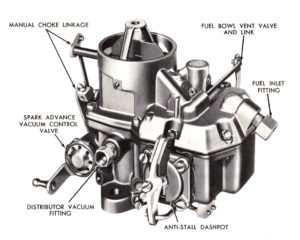
Exterior cowl panel once removed
Many restoration shops don’t take the time to remove the exterior cowl panel. Should you insist this be part of your Mustang’s restoration? Here are some things to consider when restoring your Mustang.
1. Hidden Rust. Rust forms around the heat and air intake, then spreads to the door post, cowl side panel and firewall. This rust remains hidden unless the cowl panel is removed. Once the panel has been removed, the area can properly be inspected.
2. Leaks. Rust holes cause water leakage from under the dash. If the cowl panel has not been removed and restored, rust can go unnoticed until bigger problems surface. If your cowl does not leak, rust still might be forming inside. You would still need to examine the area by removing the cover.
3. Proper Inspection. Inspecting the cowl from under the dash is not adequate. To completely see all of the areas, the cowl panel must be removed. It is a lot of work to remove it, but will be worth it to inspect this area now and properly restore and seal this area to protect the longevity of your Mustang.
4. Concours Restoration. Once the cowl has been removed and restored, the cowl area can be painted. Mustangs that have had this area painted look much nicer. There is no longer any scaly paint inside the cowl vent grills (a common problem with Mustangs that have not had their cowl panels removed).
This picture is from our current restoration project, a 1965 Mustang factory GT Fastback. It was thought to have a rust-free cowl since there were not any leaks. After removal of the cowl panel, however, you can see the moderate surface rust located around the air intake area. This rust is minor now, but if the cowl was not removed, this area would continue to rust.

1965 Mustang left hand cowl air intake (driver’s side)
The picture below shows the cowl heater intake vent (passenger side of the Mustang). It has moderate surface rust located near the door post. It is still solid, but given time, this rust would cause serious problems.

Right hand side of the cowl panel, heat intake vent area
It took several hours to locate and drill all of the spot welds. But this time is well spent as it will save many hours of grueling repairs in the future. The cowl will now be sandblasted and epoxy primered to eliminate any possibility of future rust.
Tips for removing a cowl panel: see our Mustang Guides, Locating Spot Welds for a Unibody Panel Replacement and Drilling Spot Welds for a Unibody Panel Replacement for removing spot welds.
Important Note: When re-installing the cowl cover, make sure the alignment is perfect. This is critical for proper hood and fender alignment. If your original cowl cover will be used, simply align all the drilled spot welds. If a replacement cowl cover is used, fenders and hood may need to be bolted on and aligned to achieve this proper cowl alignment. Without proper alignment, you can be sure to need some Tylenol, as you will be faced with many headaches!






